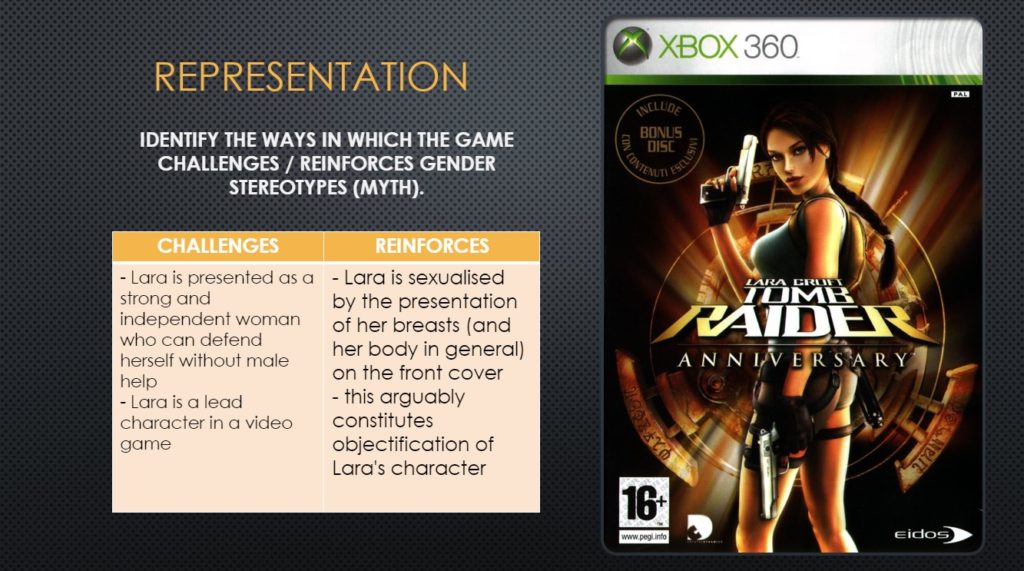
game cover semiotic analysis (representation)





my working title for this gaming magazine is ‘Gameshack’ – this title implies that the reader is part of a tight community of gamers and that they are in the ‘shack’ – they are in the know, where gaming is concerned. As my target audience are 16-24-year-old men, this sense of being ‘in the know’ is helpful, as this demographic tend to follow trends both in gaming and in wider society. This demographic is addressed by the use of relatively simple language on the magazine cover, giving way to more technical jargon on the inside (traditional gaming magazines tend to use this strategy of simple outside/complex inside) and ensuring the magazine’s broad appeal. my magazine will include an article about the game mentioned in the cover strapline – Interactive Spelling Feud – and it will interact with the magazine’s readership through ‘best and worst games of Summer 2019’-type discussion in the magazine, designed to spark debate. my magazine’s main image is a depiction of the two main characters in Interactive Spelling Feud, demonstrating the centrality of that game to this issue of the magazine, and the magazine uses white text on bright red on the magazine’s headline in order to draw the attention of the reader to the magazine’s coverage of Interactive Spelling Feud. I used the font ‘Bauhaus 93’ in order to create a futuristic and electronic style on the magazine’s cover.
This magazine, despite its relatively mainstream characteristics, remains viable due to the fact that the gaming magazine market is still a growing market with much space for high-quality new additions. It also uses the standard conventions of a date and a price.


age: 53
location: Glasgow
race: white Scottish
gender: male
occupation: civil servant
hobbies: reading and cycling
newspaper readership: the Morning Star
favorite film: For a Few Dollars More
favorite TV show: Homes Under the Hammer
favorite music: Pink Floyd
NRS occupational class type: B (skilled and professional white-collar worker in an administrative job)
‘7 New Classes’ social class: Established Middle Class (relatively high levels of all three types of capital due to his professional and skilled job + culturally and politically engaged due to his governmental job)
Young and Rubicam’s 4 Cs: The Reformer (reads the Morning Star and is a member of Unite, politically engaged and knowledgeable)


i have chosen to focus my gaming magazine cover around a single character upon a given background, with the main headline dedicated to a full feature article on (and news coverage of) that character’s game. feature promotions and adverts and offers occupy the far left and the bottom of the publication, with a big title taking up the top third.
in the digital age, magazine-like content is more easily accessible than ever. the rise of websites dealing in the kinds of specialist content magazines generally produce has undercut magazine sales – especially because most of these websites are free, and make their money from targeted advertising rather than physical sales. the speed at which information generally moves in the digital age is also not favorable for magazines, as it favors continuously-updating online content rather than weekly or monthly magazines – magazines frequently run the risk of becoming ‘old news’ only days or weeks after their publication. most consumers are used to getting much of their news and views at home, via the internet, TV and radio, and so many people will rarely go to a shop to buy a newspaper or magazine. magazines are also made of paper – significant numbers of consumers have grown averse to print media, in the name of saving the trees.
